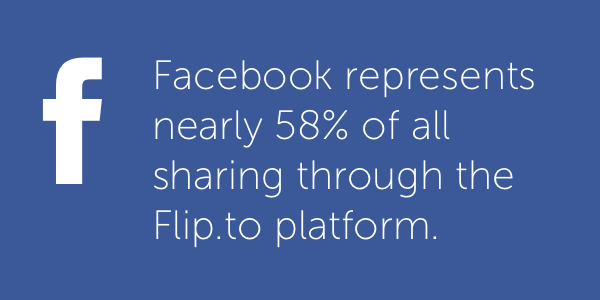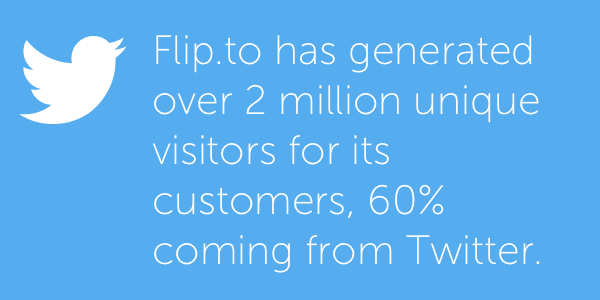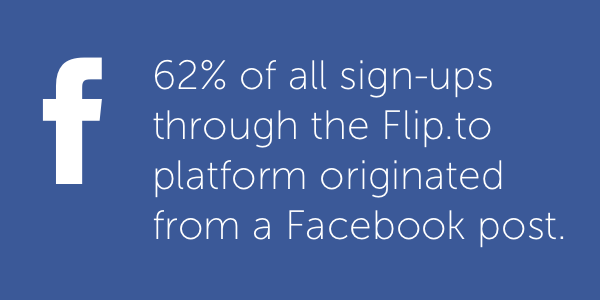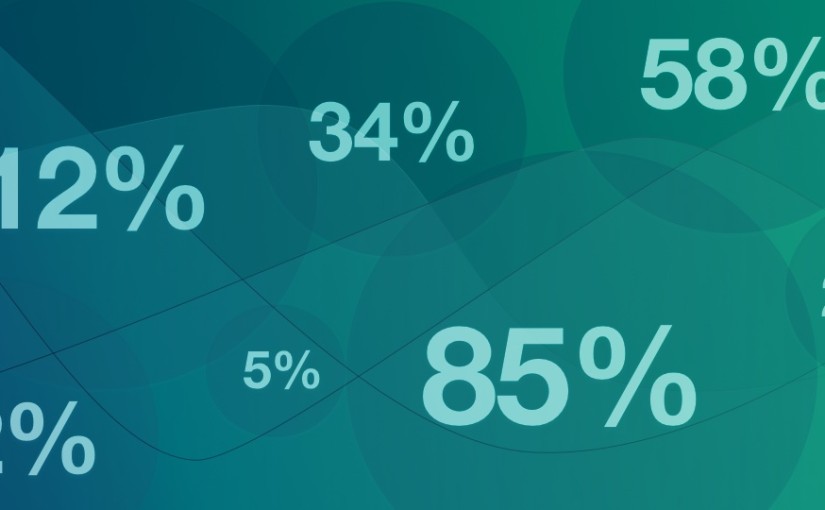There are a ton of social networks out there, each intending to do different things and appeal to different demographics. But as a hotel, which ones should you really care about? The answer to this question depends largely on who you ask. I could lecture about what I think are the best choices but I find it’s a lot more fun (and relevant) to simply look at the data—and we have lots of data.
Flip.to has been the advocacy platform for hotels and theme parks for over five years. In that time we’ve helped our clients connect with their guests in meaningful ways. In doing so, we’ve been able to collect a huge amount of data, and observe how the big three (Facebook, Twitter, and LinkedIn) social networks, well, work.
Here’s how we define social engagement, plus 4 key takeaways to pull back the shroud, and help guide your hotel’s social engagement efforts with your guests.
Social Engagement
Social Sharing
In Flip.to’s space, a “share” is defined as someone who’s booked a room at your property and then told their friends and family about it using a social network. Sharing is crucial because it represents the “top-of-funnel” when we’re talking about advocacy. These advocates’ voices are powerful, delivering an impactful message that comes from a trusted friend rather than a corporation.
 When it comes to sharing, Facebook is the clear winner. This isn’t a big shock because Facebook is arguably, if not absolutely, the most popular social network in most parts of the world today. What’s interesting here is just how popular it is relative to Twitter and LinkedIn. Facebook represents nearly 58% of all sharing through the Flip.to platform. Twitter is a distant second at 27%, and LinkedIn represents the remainder.
When it comes to sharing, Facebook is the clear winner. This isn’t a big shock because Facebook is arguably, if not absolutely, the most popular social network in most parts of the world today. What’s interesting here is just how popular it is relative to Twitter and LinkedIn. Facebook represents nearly 58% of all sharing through the Flip.to platform. Twitter is a distant second at 27%, and LinkedIn represents the remainder.
Social Connectedness
When we talk about social connectedness, what we’re really saying is “reach.” High sharing volume is great, but paired with massive reach it’s even more powerful.
In the last five years, Flip.to has helped its customers reach over 60 million connections through advocacy.
So how does that break down by network?
Again, Facebook rules the roost. Of those 60 million connections, 69% can be attributed to Facebook. Twitter is an even more distant second with about 25%, and LinkedIn rounds out the balance. It’s important to note that the difference between first and second here is significant. Not only does Facebook represent more social connections, it represents more connections per advocate as well—creating a multiplier effect.
Unique Visitors
Any time an advocate shares an upcoming trip to a social network, there’s an invitation for her connections to visit the property’s website and learn more. Plus there’s an incentive attached to entice that person to book in the future. Driving traffic to the property’s website means there’s an opportunity to win over this prospect and secure a sale down the road, cutting out any intermediaries.
 Here’s where our journey gets really interesting. At the time of this analysis, Flip.to had generated over 2 million unique visitors for its customers. Of those 2 million, nearly 60% came from Twitter. Facebook, now the distant second, represented about 34%. Despite creating the majority of advocates and despite those advocates representing greater social reach than all others, Facebook could not deliver the same volume of website traffic that Twitter could.
Here’s where our journey gets really interesting. At the time of this analysis, Flip.to had generated over 2 million unique visitors for its customers. Of those 2 million, nearly 60% came from Twitter. Facebook, now the distant second, represented about 34%. Despite creating the majority of advocates and despite those advocates representing greater social reach than all others, Facebook could not deliver the same volume of website traffic that Twitter could.
Potential Future Guests
Once a friend or family member lands on the property’s website, a customized message invites them to sign-up and lock in an incentive for a future stay. Those that sign-up represent a pool of potential future travelers for the property. They’ve been given the best introduction possible—that of a trusted source—and now they have an incentive in-hand to experience the property for themselves. For the hotel, the marketing potential here is huge, so capturing those sign-ups is critical.

Facebook manages to pull ahead again here by a large margin. 62% of all sign-ups originated from a Facebook post. Taking it a bit further, about 12% of all advocacy originating from Facebook will result in a sign-up on the hotel’s website. With Twitter it’s closer to 3% and with LinkedIn it’s nearly spot-on 2%. LinkedIn did manage to close the gap as we moved through the conversion funnel.
Key Insights to Guide Your Hotel’s Social
Know (and be) where your guests are
With the majority of social advocacy taking place on Facebook and Twitter it’s safe to conclude your guests are active on these social networks so you should be too. There’s more to it than just having a presence but that’s a discussion for another time. If you’re looking to invest in one over the other, Facebook is likely your best route but it’s critical you understand your customer demographic before diving in. Don’t assume one is the clear winner every time.
(Relevant) Content is King
People are better connected via Facebook than they are through either Twitter or LinkedIn. Since we know they prefer to share via Facebook, this means that sharing relevant, meaningful content with your audience can be more impactful through this channel. Take advantage of the multiplier I mentioned and ensure that your message is hitting home.
Posts that include photos receive 120% more engagement than the average post.
Via BitRebels
Tailor messages based on the channel and the audience
Twitter is a massive broadcasting tool that makes up for fewer connections, but with a more active audience. We demonstrated that you can effectively drive direct traffic by taking advantage of your guests’ connectedness over Twitter.
While it may not convert at the same level as Facebook, there’s something to be said about volume. Adjusting your messaging on that channel can help to improve conversion and bridge the gap. Additionally, Twitter was designed to be a conversational tool, unlike the other channels. When you’ve been tagged in a tweet that’s an open invitation to engage in a conversation with that person. Each subsequent tweet can reach that same audience time and time again.
Know how to convert social traffic
The Facebook crowd is more likely to convert and sign-up on your website, underscoring the importance of this channel. It may not bring as many people to your site as Twitter does, but those that come are there for a reason.
Understanding where these potential future guests are in the travel booking process is crucial. Be sure to have content on your website that appeals to a socially-minded audience. A sign-up for an offer they can claim on a future trip, for instance, may be more relevant to this viewer. This not only keeps people on your site longer, it improves conversion. Lookers turn into bookers when they see an experience that’s aspirational and attainable. Seeing that experience through the eyes of former guests is as real as it can get without being there yourself. So consider your on-site messaging and what story it’s telling your potential guests.
The biggest lesson from this analysis is that it’s immensely important that hotels understand their guests and that they make some effort to tap into their guests’ social connectedness.
Every guest that walks through a hotel’s door represents an opportunity to create the experience that guest is expecting.
Hotels are great at this. But thinking beyond the on-property experience, every guest represents a social network of their own, like-minded friends and family. Tapping into that network can yield great benefits when done thoughtfully.
